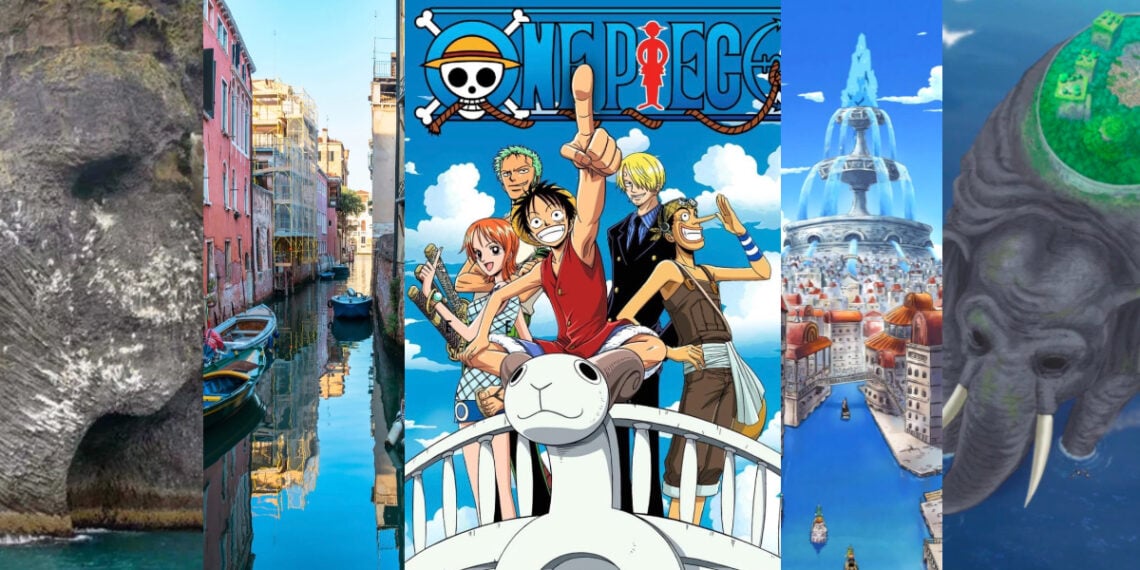Eiichiro Oda, the creator of One Piece, artfully draws inspiration from real locations around the world to portray the many places Luffy and his Straw Hat pirate crew visit on their adventures. More so than other major Shonen manga series, One Piece takes readers on a voyage across the globe. So here are 10 Islands in One Piece inspired by real locations.
The locations are not just brief stops but fun explorations that provide opportunities to further develop Luffy and his crew.
Oda does not simply copy real sites but rather uses them as jumping-off points to inform his fictional world. While some places in One Piece are purely imagined, most have roots in actual cultures and landscapes that readers can relate to.
This gives fans a sense of familiarity with each new setting based on its real-life counterpart. By basing his fantasy locations on reality, Oda makes the world of One Piece feel tangible and real, enriching the adventure.
10 Islands in One Piece Inspired By Real Locations
Here are the top 10 locations in One Piece that are inspired by real-life places on Earth.
10. Dressrosa
Real World Counterpart: Park Güell, Barcelona, Spain
The island of Dressrosa was a pivotal location in One Piece, as Luffy and the Straw Hats confronted the tyrannical ruler Donquixote Doflamingo.
With its vibrant, checkered buildings and mix of human and toy citizens, Dressrosa initially appeared to be a whimsical place. However, it soon became clear that the island was gripped by Doflamingo’s ruthless authority.
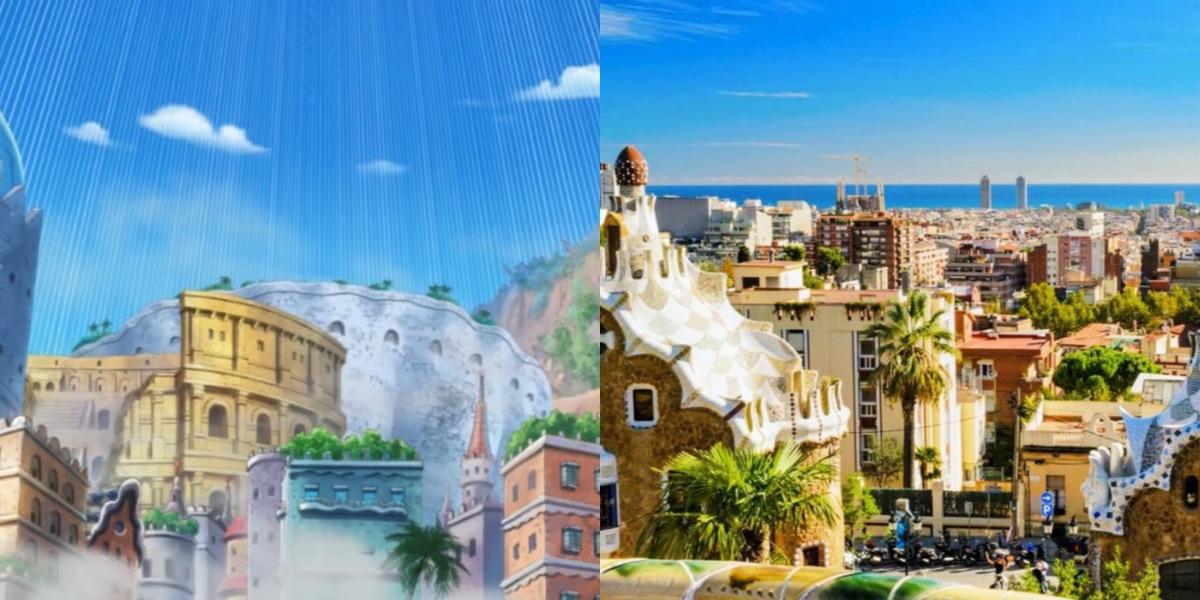
The real-world inspiration for Dressrosa is Park Güell in Barcelona, Spain. Designed by renowned architect Antoni Gaudi, Park Güell features lush gardens, vivid mosaics, and striking modernist architecture.
This blend of color, textures, and imaginative shapes makes Park Güell one of Spain’s most visually captivating sites.
By basing the fictional Dressrosa on the real-life beauty of Park Güell, Oda created a vivid backdrop for one of One Piece’s most action-packed story arcs.
The clash between Luffy and Doflamingo was perfectly complemented by Dressrosa’s deceptive charm, keeping readers enthralled as the Straw Hats fought to liberate the island from Doflamingo’s grasp. Oda skillfully brought Dressrosa to life by drawing from the real-world inspiration of Park Güell.
9. Mary Geoise
Real World Counterpart: Chateau De Chambord, France
The World Government’s capital, located on One Piece’s Grand Line, is the center of power and decision-making regarding the pursuit of pirates. Despite its pristine marble architecture, this fictional city harbored extensive political corruption and was even home to the nefarious Donquixote Doflamingo.
The real-world inspiration for the World Government’s headquarters is Château de Chambord in France’s Loire Valley. A renowned UNESCO World Heritage Site, Château de Chambord exemplifies French Renaissance architecture with its distinctive French castle style.
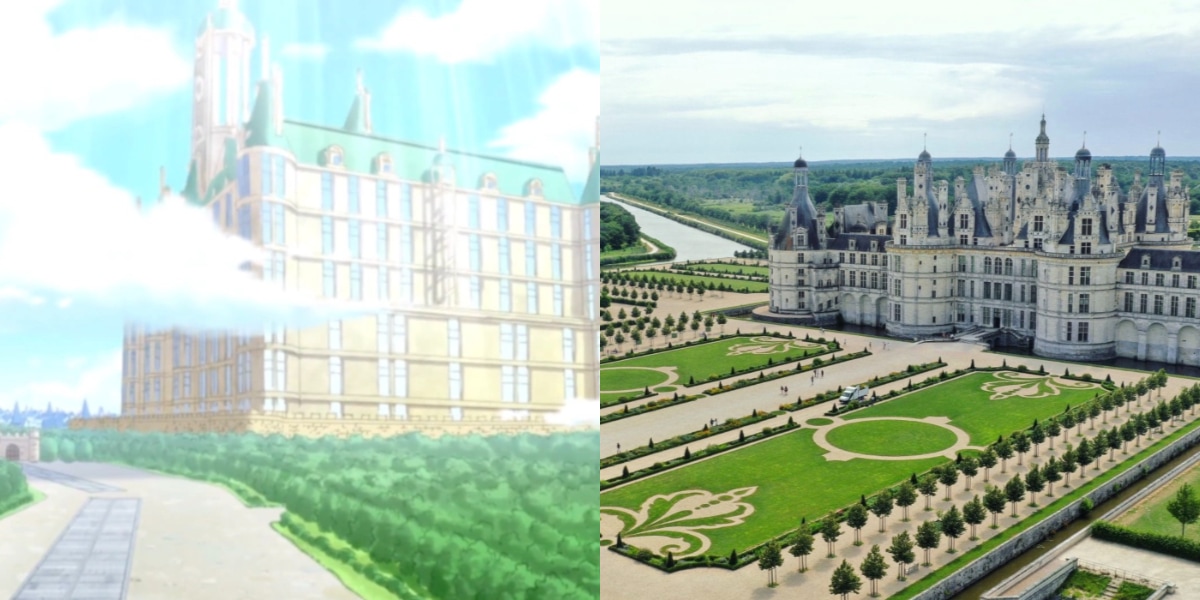
Having been inhabited by several French kings, Château de Chambord is one of France’s most famous and frequently visited manor houses.
By basing the World Government’s capital on the grandeur and legacy of Château de Chambord, Oda creates a fitting seat of power for One Piece’s most influential political force.
The striking resemblance highlights the ironic contrast between the World Government’s ethical decay and the majesty of its lavish architectural surroundings. Oda adeptly utilizes a legendary real-world landmark to flesh out a pivotal fictional setting.
8. Rommel Kingdom
Real World Counterpart: London, England
The fictional Rommel Kingdom in One Piece makes a brief but memorable appearance in chapter 734 and episode 666, serving as the setting for a suspenseful tale about a serial killer, Lose in the City.
Though seen only fleetingly, Rommel Kingdom is clearly modeled on London, evident through its iconic Big Ben-style clock tower.
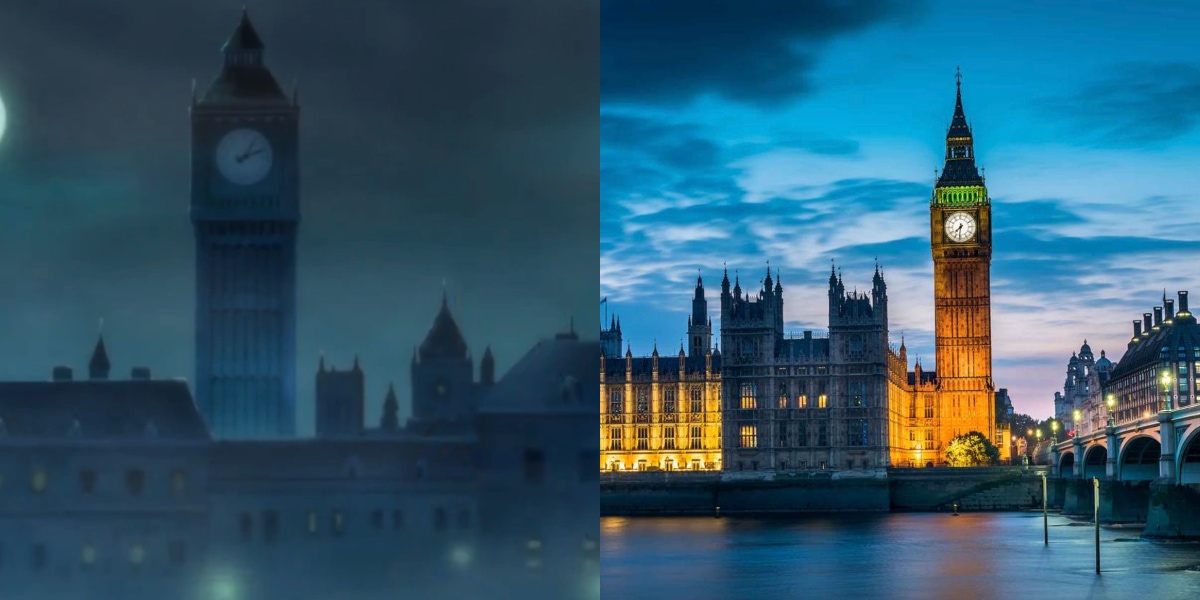
The mysterious slasher stalking Rommel Kingdom also draws inspiration from real history, paralleling the infamous 19th century Jack the Ripper murders in London.
By basing this fictional scenario on the actual Ripper killings and situating it in a London-esque environment, Oda creates an air of eerie familiarity. Readers instantly recognize the real-world parallels, allowing Oda to quickly establish an ominous tone without a lengthy explanation.
Though Rommel Kingdom occupies just a few panels, Oda packs it with real-world inspirations that immerse readers in the story.
The London-like backdrop and Jack the Ripper undertones work in tandem to transform a brief digression into an impactful, chilling vignette. Oda artfully employs real history and locations to bring vibrancy and resonance to even minor settings in the sprawling world of One Piece.
7. Zou Island
Real World Counterpart: Elephant Rock, Iceland
One of the most visually distinctive islands in One Piece is Zou, a civilization situated on the back of a massive, ancient elephant named Zunesha.
As Zunesha continually walks the ocean on long legs, the unique relationship between the elephant and the island’s inhabitants provides protection from outside attacks.
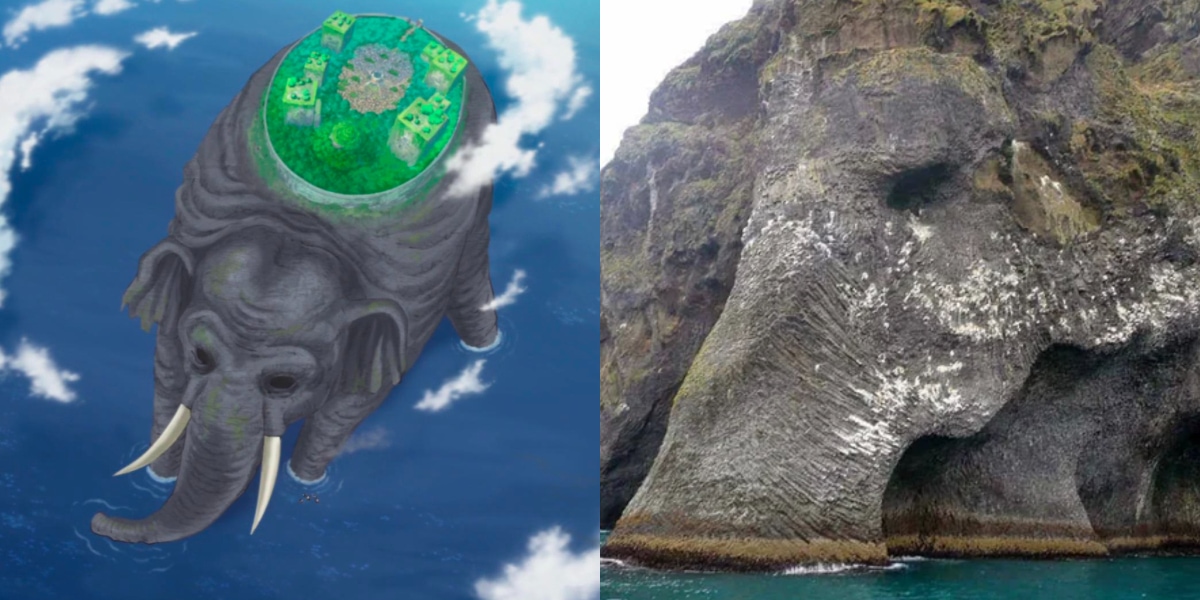
While animals carrying worlds is a recurring motif in literature, Zou Island specifically draws inspiration from Iceland’s Elephant Rock.
Both share a color palette of grey and green, as well as similar cave-like eye shapes. The real-life Elephant Rock lent an air of fantastical believability to Zou Island and its walking elephant, fitting seamlessly into the seafaring realm of One Piece.
By basing Zou Island on a real geological formation, Oda blends fantasy and reality to create one of One Piece’s most imaginative settings.
The connection to a real place helps make the island feel like a plausible part of the One Piece world despite its whimsical premise. Zou Island exemplifies Oda’s skill at fusing real-world inspiration with boundless creativity to craft bold new locations that propel Luffy and his crew into unforgettable adventures.
6. Amazon Lily
Real World Counterpart: Hanging Temple, China
After being separated from his crew by Kuma’s attack, Luffy landed alone on Amazon Lily, an island inhabited solely by a tribe of formidable female warriors. At first, adrift without his friends, Luffy has his hands full, navigating this dangerous yet strikingly beautiful setting.
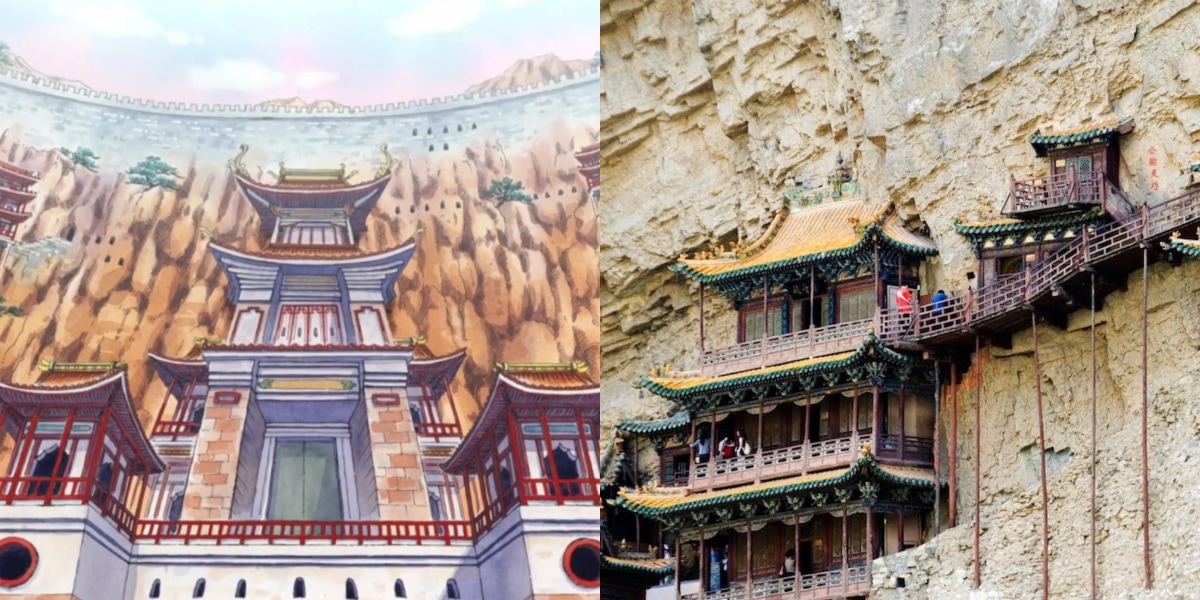
The temples and architecture carved into the cliffs of Amazon Lily are drawn from the real-life Yungang Grottoes in China’s Shanxi Province. This ancient Buddhist temple complex was built into cliffsides during the 5th and 6th centuries, housing devotees of traditional Chinese philosophies and religions.
By modeling Amazon Lily’s environments on the Yungang Grottoes, Oda roots the fictional island in centuries-old real-world counterparts.
The inspiration from Chinese sacred architecture lends ancient grandeur and mystique to the home of One Piece’s tribal warrior women. Blending reality with fantasy, Oda creates a setting that feels grounded in history yet remains intriguingly new and uncharted for Luffy’s continuing adventures.
5. Gray Terminal Of Dawn Island
Real World Counterpart: Smokey Mountain, Philippines
Dawn Island, the home of beloved One Piece characters, contains the destitute region known as Gray Terminal. Inhabited by citizens like Sabo who scavenge valuables from heaps of garbage, Gray Terminal is modeled after a controversial real-world slum called Smokey Mountain in Manila, Philippines.
True to its name, the real Smokey Mountain is a mountainous pile of discarded trash and unwanted items. Fires from burning wood fill the Manila slums with smoke, mirroring the polluted, impoverished conditions of the fictional Gray Terminal.
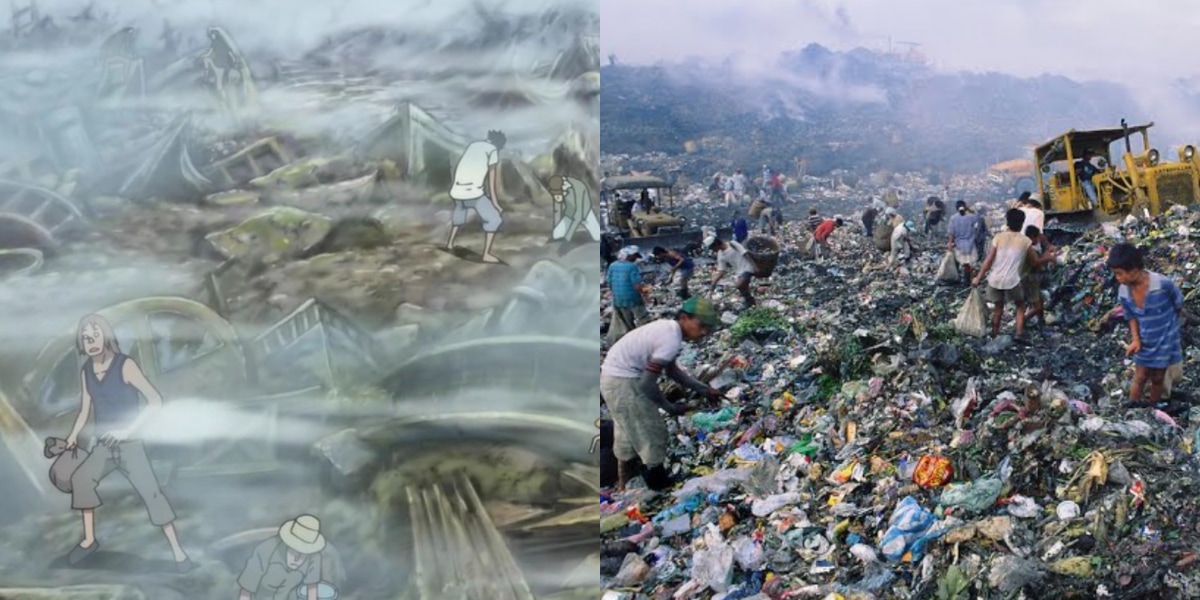
By basing Gray Terminal on one of the world’s most infamous slums, Oda ground One Piece in sobering reality. The parallels remind readers that for all its fantasy, One Piece reflects genuine social issues.
Gray Terminal’s roots in Smokey Mountain’s economic deprivation provide gritty, thought-provoking depth to the backstory of well-known characters like Sabo. Oda leverages this real-world inspiration to inject social commentary into One Piece’s adventurous narrative.
4. Alabasta Kingdom
Real World Counterpart: Egypt
The fictional Alabasta Kingdom in One Piece draws heavily on ancient Egyptian architecture and geography for its setting. This expansive arc sees Luffy gain Robin as a new crew member and reunite with his brother Ace, all while battling the sand-wielding villain Crocodile.
The variety of cities and towns comprising the Alabasta Kingdom are clearly modeled on real Egyptian landmarks. Iconic pyramids and the banks of the Nile River transport readers to an exotic desert landscape reminiscent of Egypt’s ancient glory.
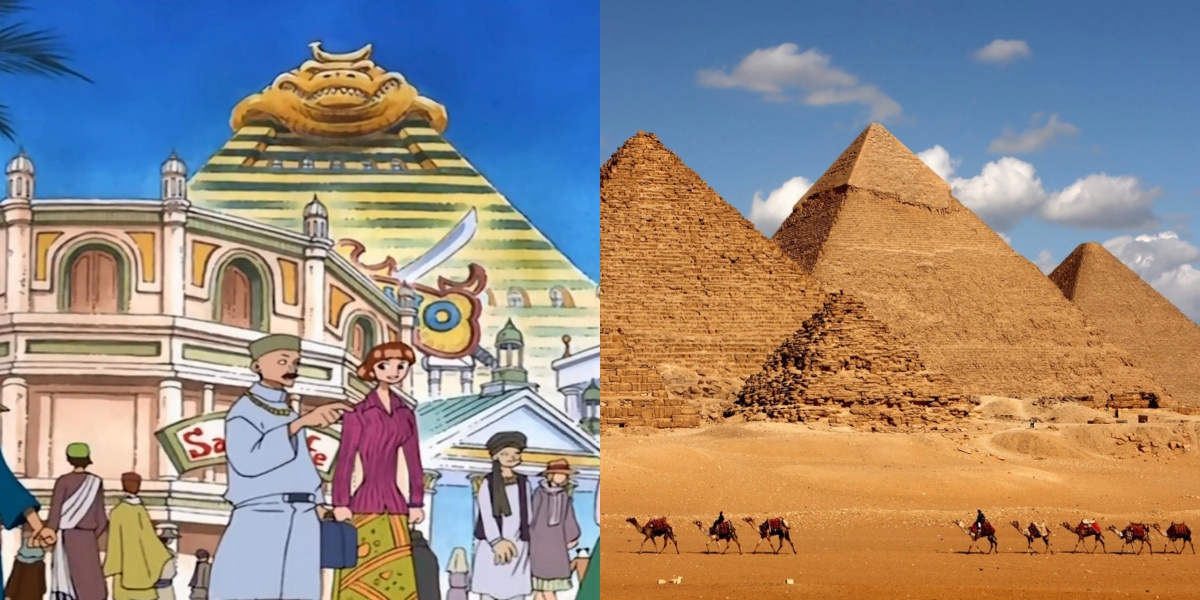
By portraying the Alabasta Kingdom against this Egyptian backdrop, Oda crafted an environment perfectly suited to Luffy’s early adventures and formative battles. The ancient ruins and swaths of desert created an epic stage for confrontations with imposing foes like Crocodile, helping cement Alabasta as one of One Piece’s most impactful early storylines.
Drawing from real-world places envelops Luffy’s journey in richness and plausibility. Oda skillfully blended Egyptian-inspired scenery with original storytelling to shape Alabasta into an essential adventure for Luffy and the Straw Hats.
3. Water 7
Real World Counterpart: Venice, Italy
The fictional city of Water 7 in One Piece is characterized by its winding canals, which serve as the primary transportation routes.
As a hub for shipbuilding, Water 7 is where the Straw Hats attempt to repair their ship, the Going Merry. From the web of canals to the distinctive boat styles, Water 7 clearly takes inspiration from Venice, Italy.
Built across a series of islands, Venice is crisscrossed by famous canals instead of roads. This real-world city has inspired countless books, movies, and TV shows as one of Italy’s most iconic destinations.
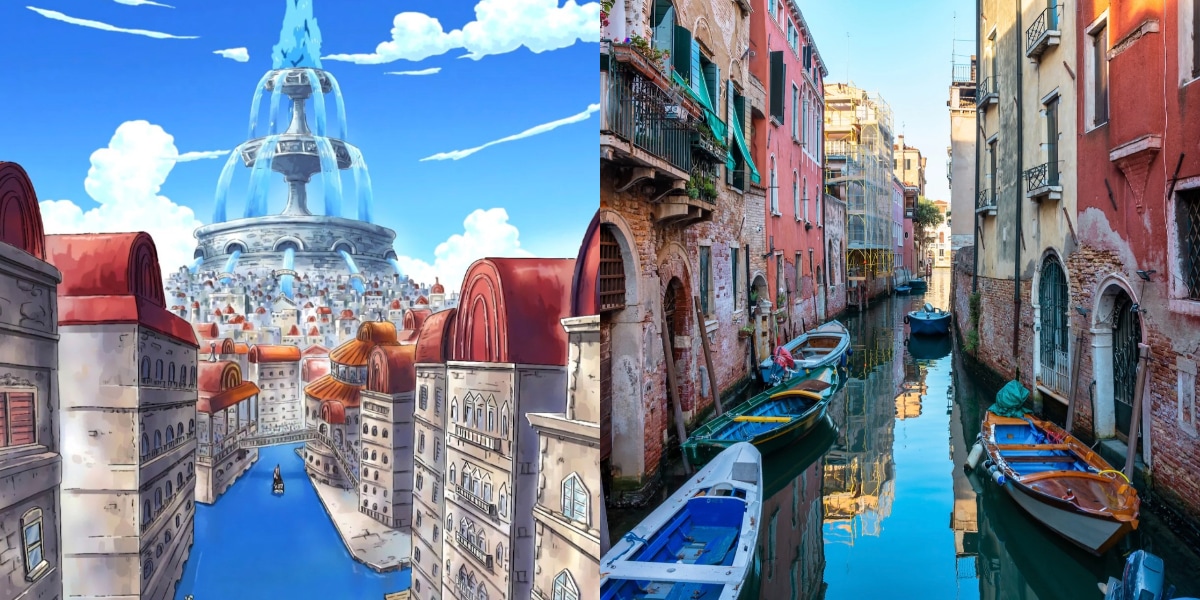
Venice’s unique geography and culture make it the perfect foundation for One Piece’s nautical Water 7.
By modeling Water 7 after Venice, Oda brings a real-world flair that resonates with readers. The parallels ground an imaginative setting in a familiar frame of reference.
Just as Venice represents a shining beacon of culture and architecture, Water 7 cements its importance as a shipbuilding haven integral to the Straw Hats’ journey. Oda skillfully utilizes real-world parallelism to establish significance and character in even One Piece’s most fanciful settings.
2. Punk Hazard
Real World Counterpart: Iceland
The island of Punk Hazard experienced a catastrophic event when the powerful Devil Fruit users Kuzan and Sakazuki engaged in an epic battle. Their respective ice and magma abilities transformed the landscape, leaving behind a cratered ocean dividing the fiery and frozen halves of the island.
This vivid imagery of contrasting elements locked in opposition evokes the real-world geography of Iceland. The volcanic activity generating infernal heat alongside frigid Arctic conditions creates a visually arresting juxtaposition.
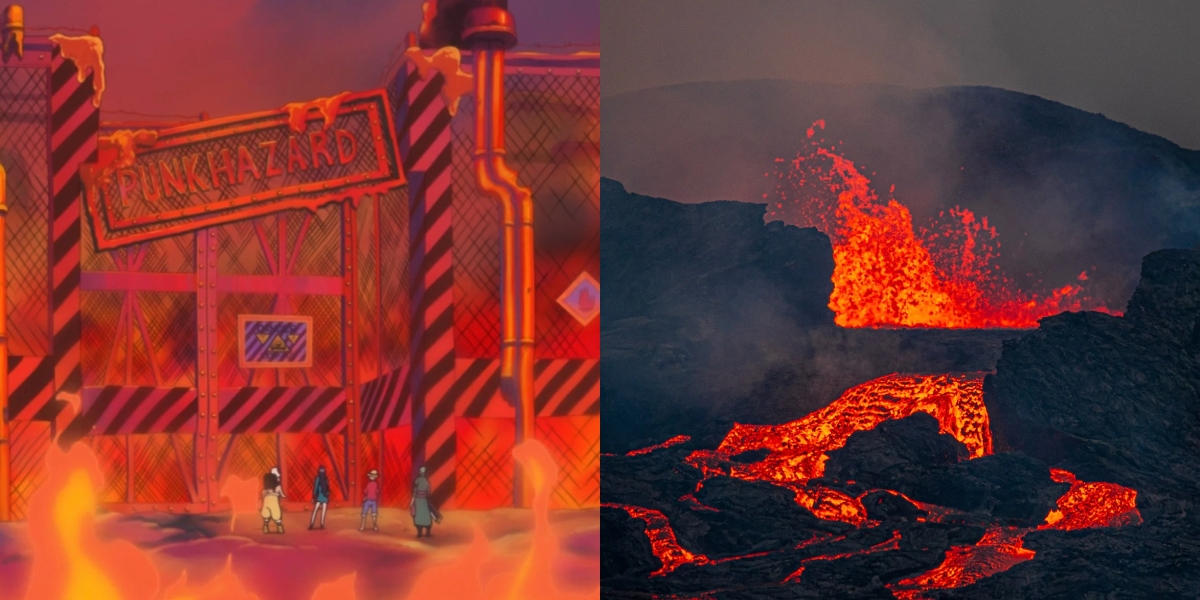
Punk Hazard exemplified this in the bizarre story arc centered around the devastated island. The aftermath of the clash between elemental powers made for an unforgettable One Piece location distinguished by a surreal fusion of fire and ice.
1. Wano Kuni
Real World Counterpart: Ninja Kingdom, Japan
The Japanese-inspired Wano Country was home to the Beast Pirates and their intimidating leader, Kaido, before his hostile takeover.
Originally, Wano was an idyllic land filled with lavish scenery. One possible real-world influence on Wano’s aesthetic could be the Ninja Kingdom, a Japanese theme park containing a full-scale replica of Azuchi Castle from the Edo period.
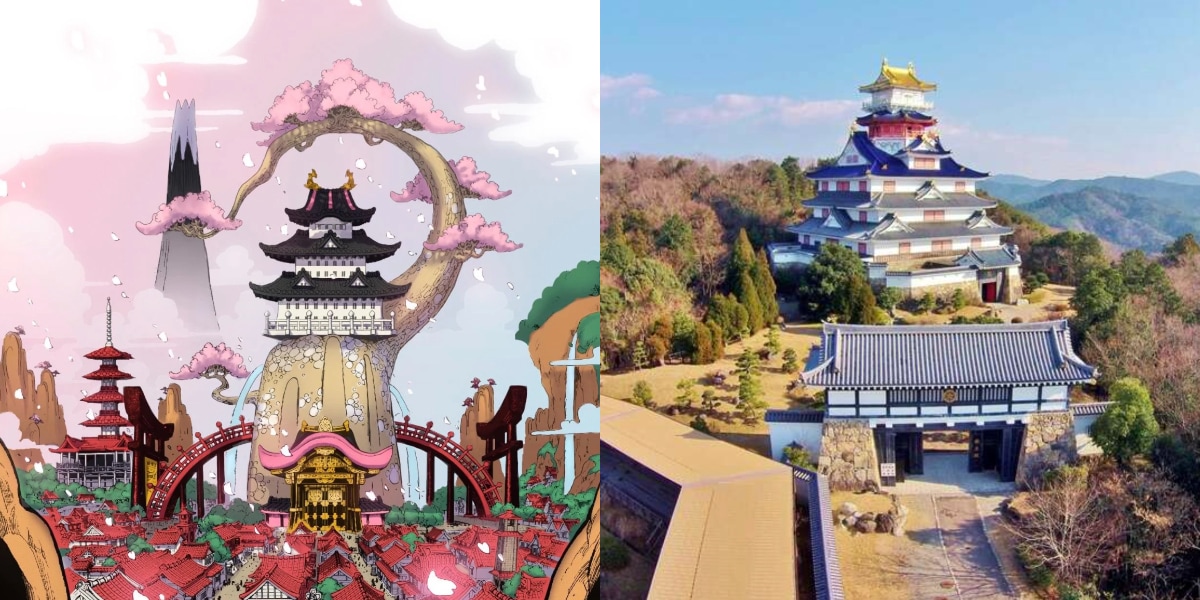
With its recreation of feudal Japan and ninja warriors, the park seems a fitting inspiration for Wano’s panoramas and Kaido’s fateful duel with samurai fighters.
While One Piece unfolds in a fictional world, many locales have roots in real-world geography. The diversity of vivid settings like Wano demonstrates creator Eiichiro Oda’s artistic talent.
He crafts unique islands and lands that feel distinct yet believably part of the same lush world. One Piece’s real-world-inspired locations are integral to its greatness as an iconic series. The blending of realism and fantasy in the story’s landscapes adds to its magic.
About One Piece
The popular manga and anime series One Piece chronicles the adventures of Monkey D. Luffy, a spirited young boy with ambitions to become the greatest pirate in the world.
After accidentally eating a mystical Devil Fruit as a child and gaining stretchy rubber abilities, Luffy sets sail for the first time to start building his pirate crew. He begins by recruiting Nami as navigator and swordsman Roronoa Zoro, forming the core of what will become the Straw Hat Pirates.
As Luffy and his ragtag crew travel the seas together, they encounter fantastical islands and themes. The whimsical world is populated with an array of eccentric characters, from living skeletons to giant beasts.
The crew might find themselves in a snow-cloaked land in one scene, then on a tropical isle with hybrid animals in the next.
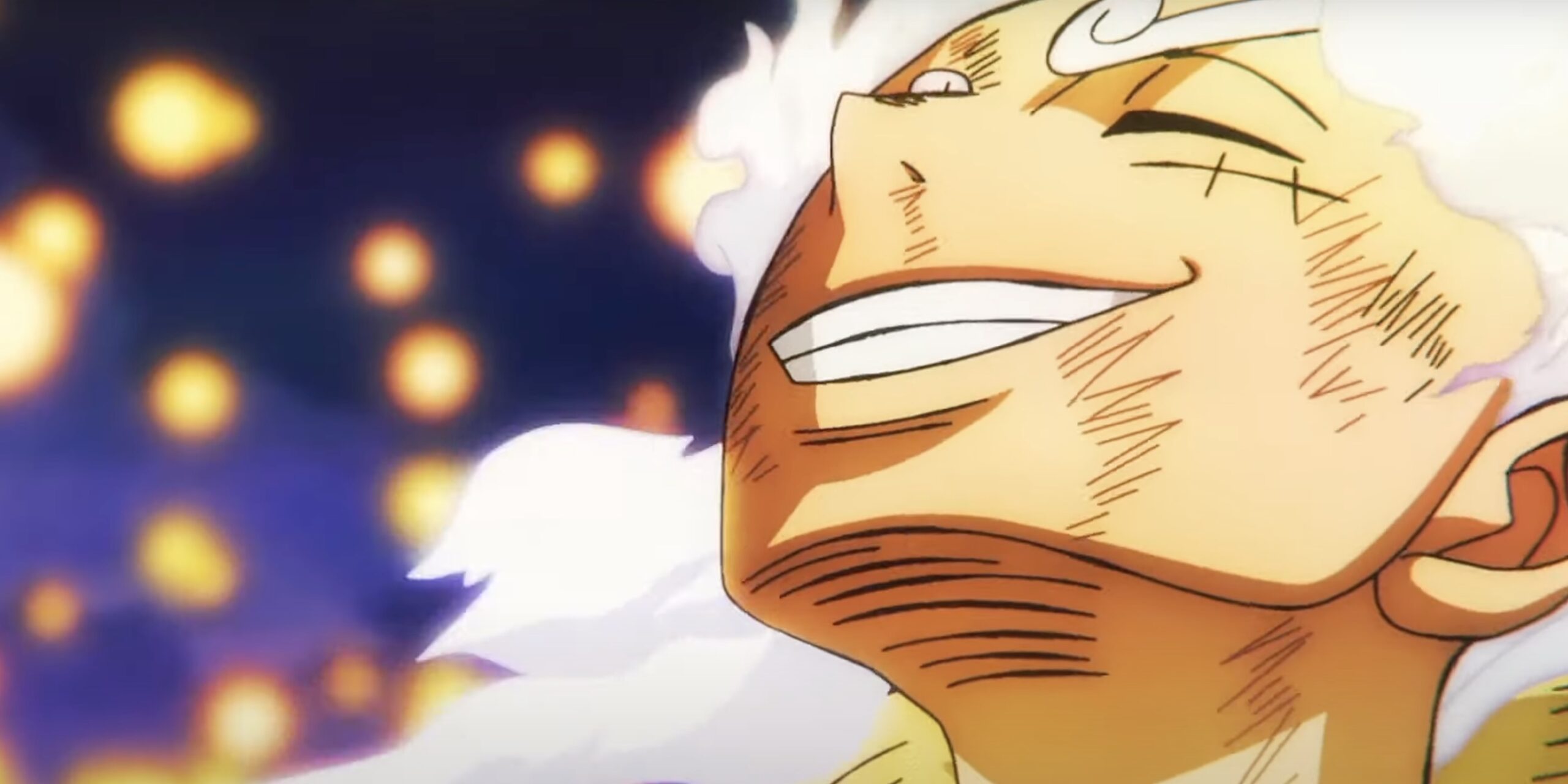
These creative details fill the series with color and humor. Zoro wields a sword in his mouth, a menacing naval leader wears a cute bulldog hat, and characters use “transponder snails” as phones. Luffy himself has an upbeat spirit, seeking fun adventures and good food over typical pirate treasure.
The joy of One Piece springs from its boundless imagination. Luffy’s journey across the inventive world and the growth of his crew make for treasured escapist storytelling.
Though filled with whimsy, One Piece frequently explores weighty themes of liberation at its core. As Luffy voyages on, he regularly takes up arms to free his friends or inspire others to revolt against pirate and military oppression alike.
The series follows shonen manga conventions as Luffy and his crew grow steadily stronger through escalating battles.

Much of the narrative spotlights Luffy pushing past seeming impossibilities and unlocking dormant power at climactic moments. These hard-fought victories incrementally empower Luffy on his quest to locate the mythical One Piece treasure.
Through this journey of overcoming greater challenges and honing their skills, the Straw Hats inch toward their potential.
Luffy’s commitment to vanquishing imposing foes highlights his heroic spirit. And the theme of rising up resonates with readers drawn to tales of underdogs triumphing against the odds.
While filled with lighthearted adventure, One Piece also delivers rousing underdog storytelling. Luffy’s struggle to defeat oppressive forces and achieve his destined greatness represents timeless heroic archetypes.

